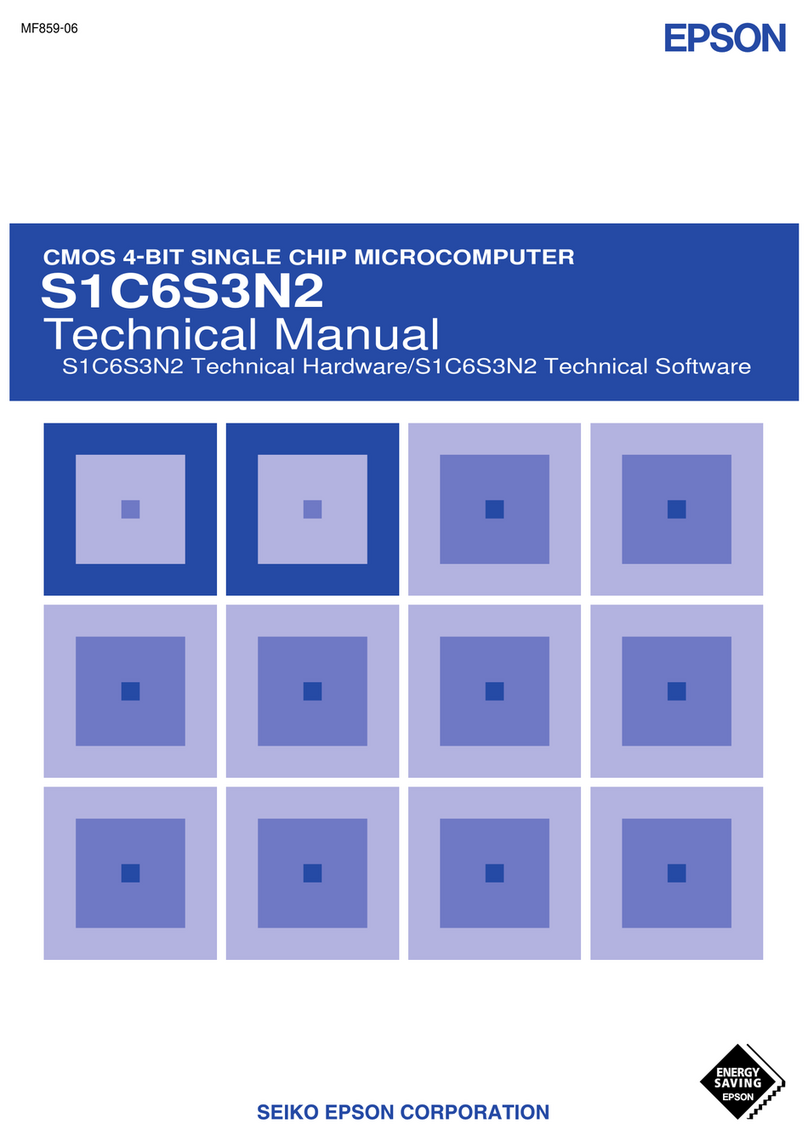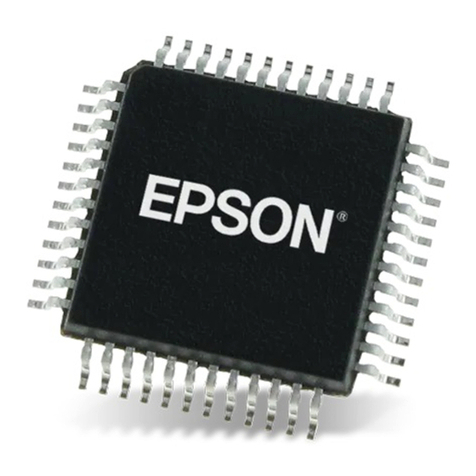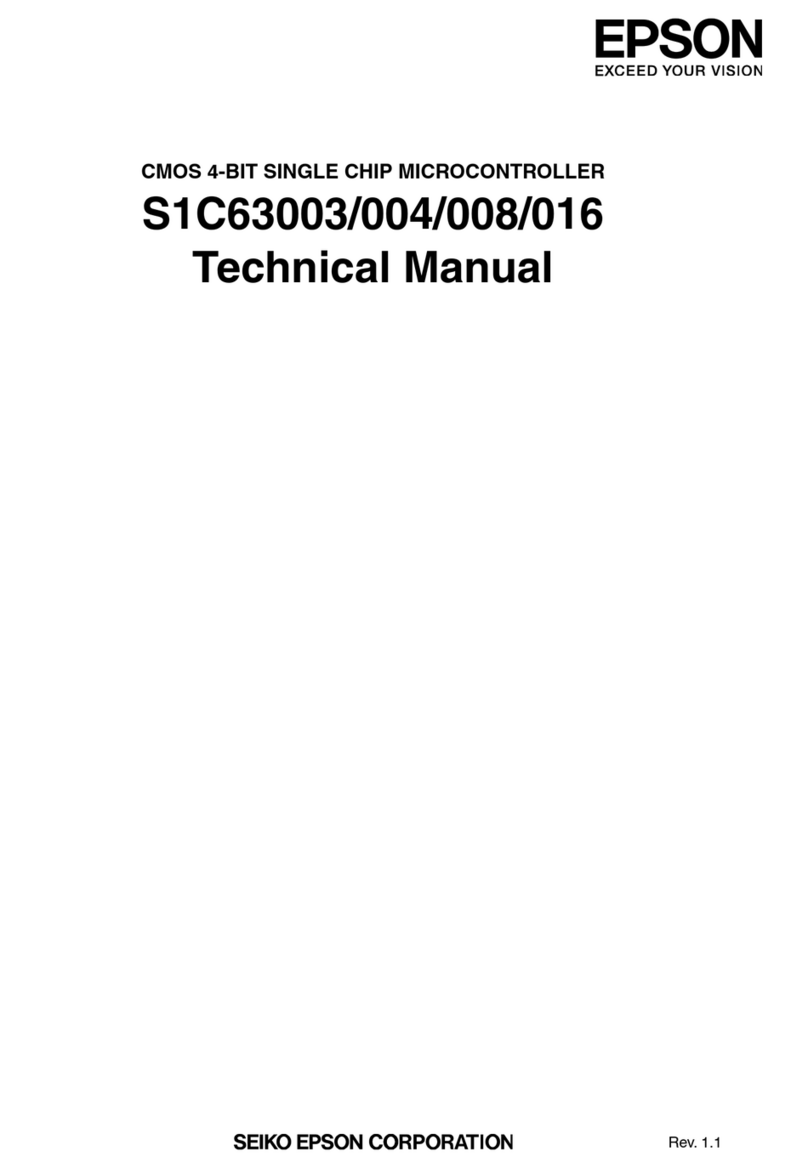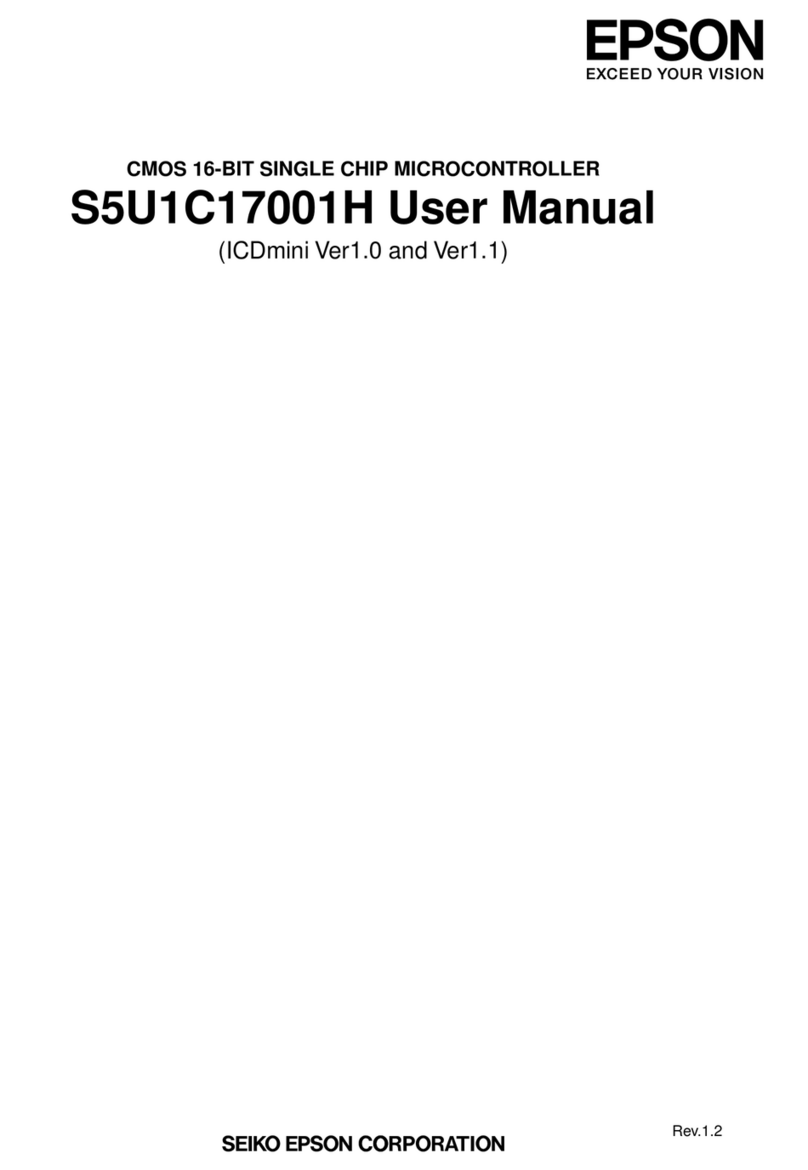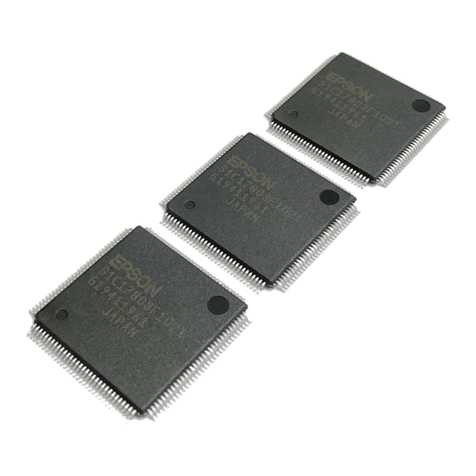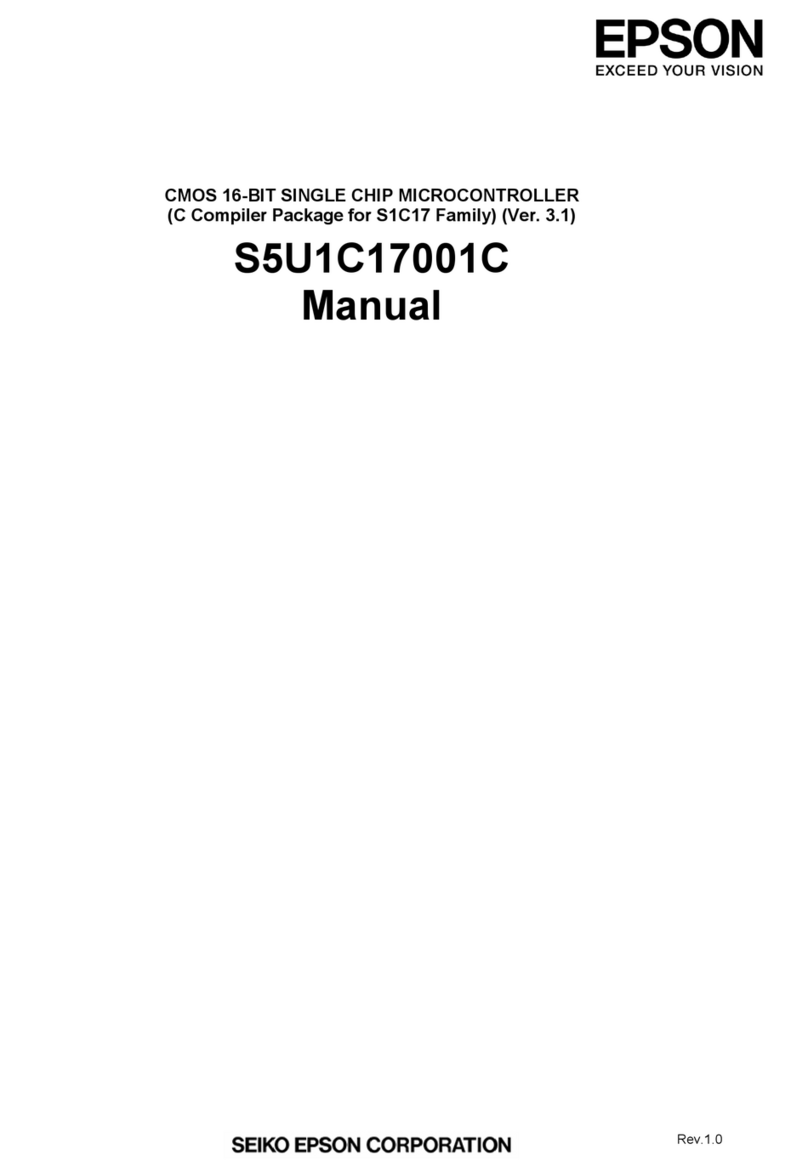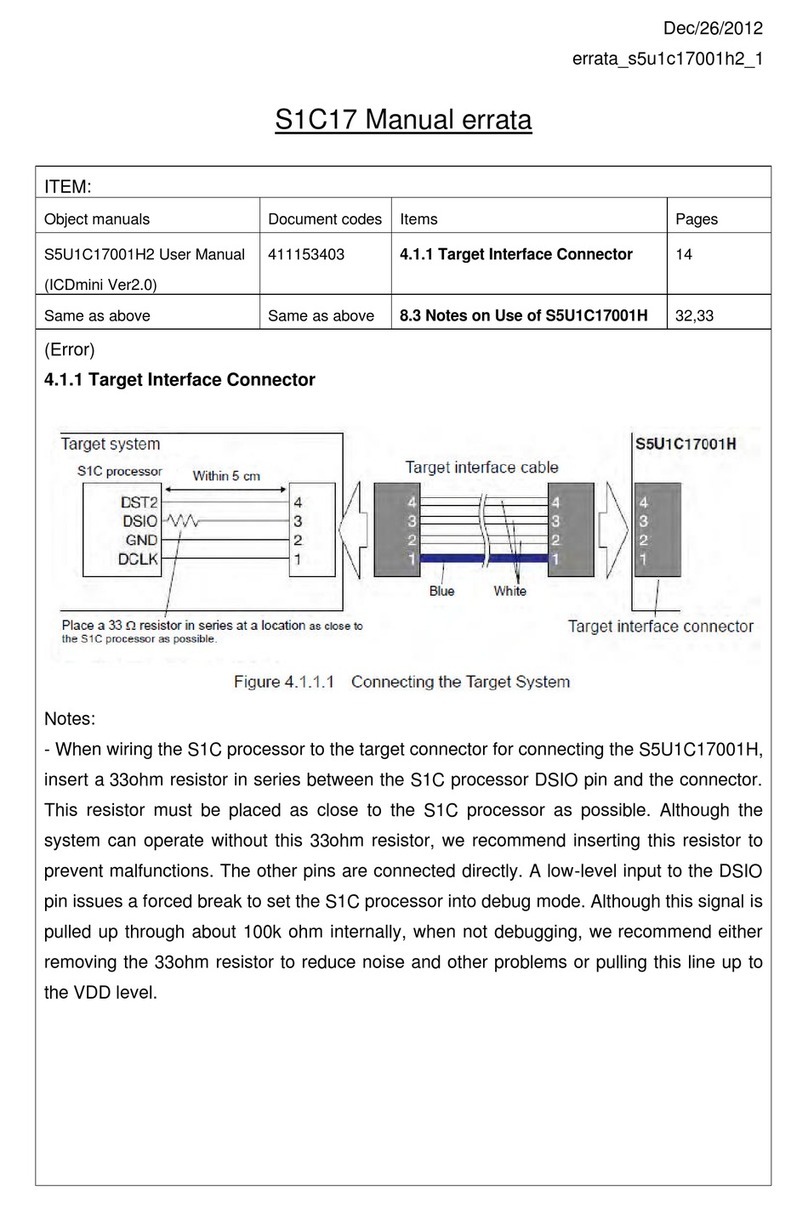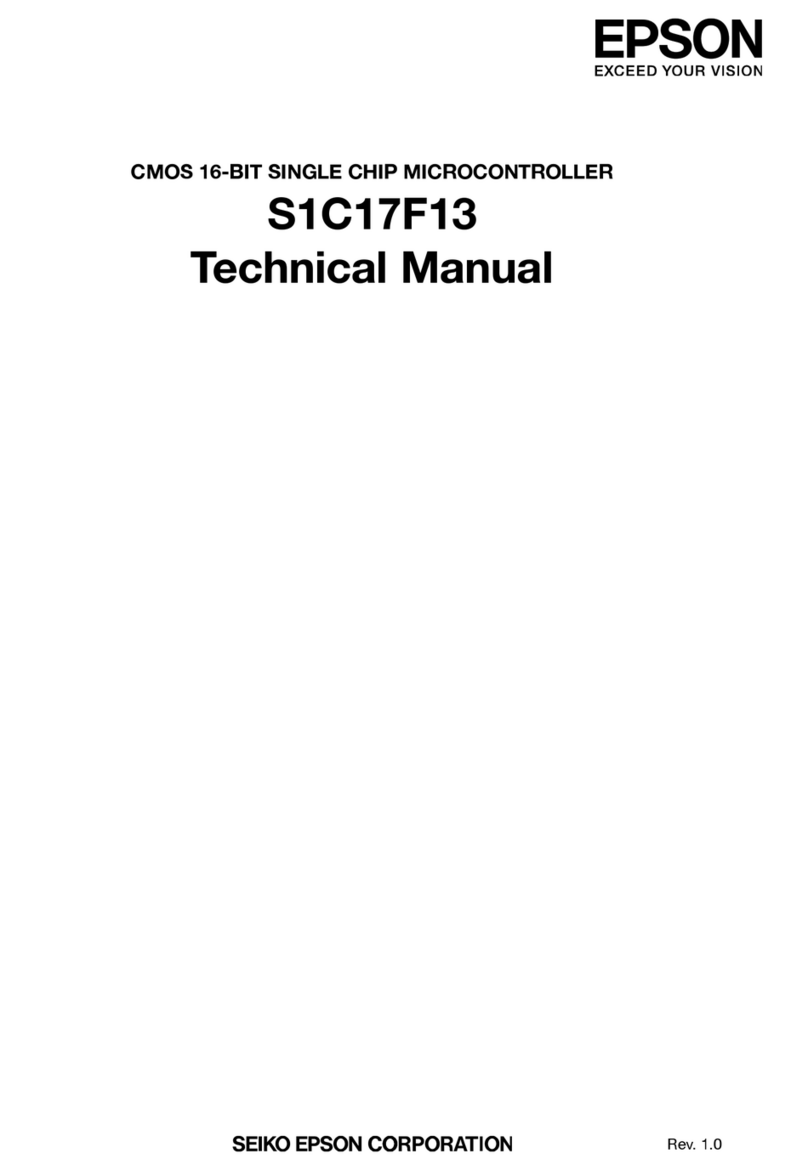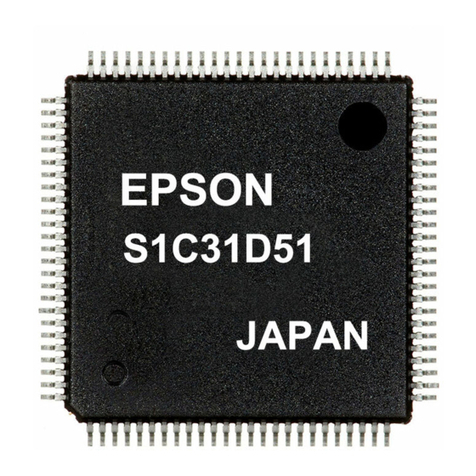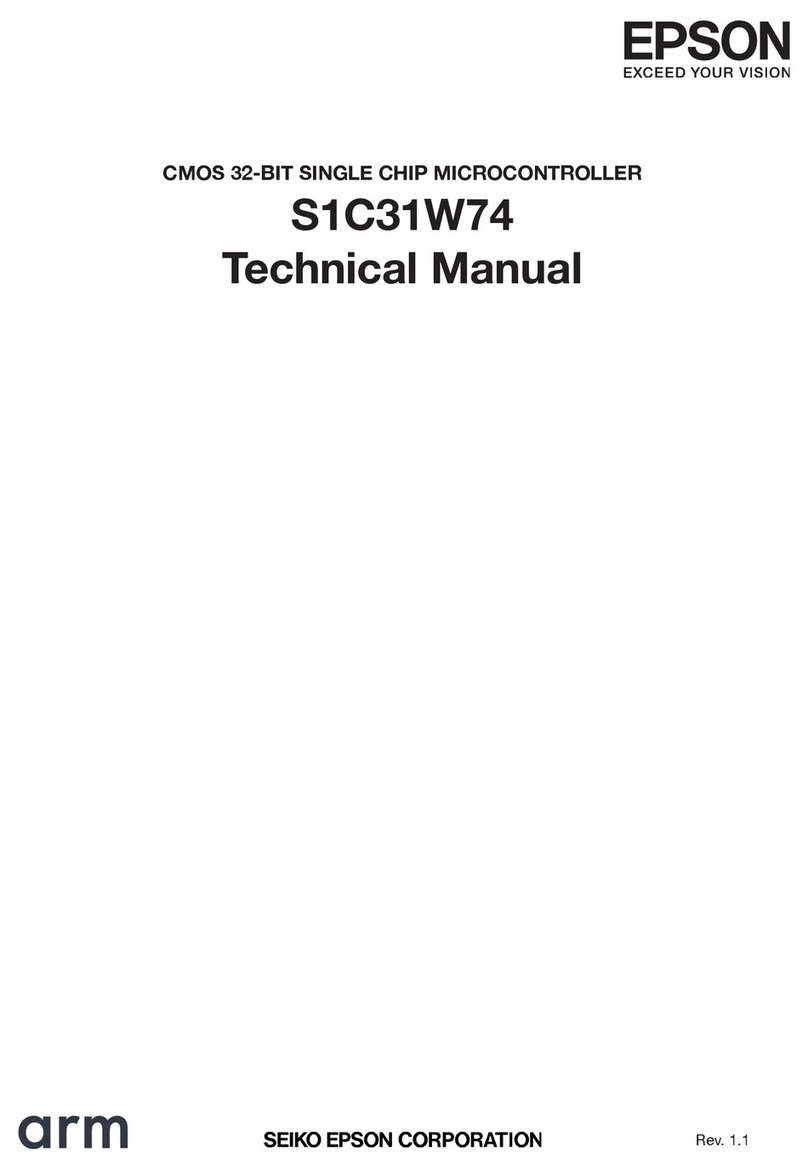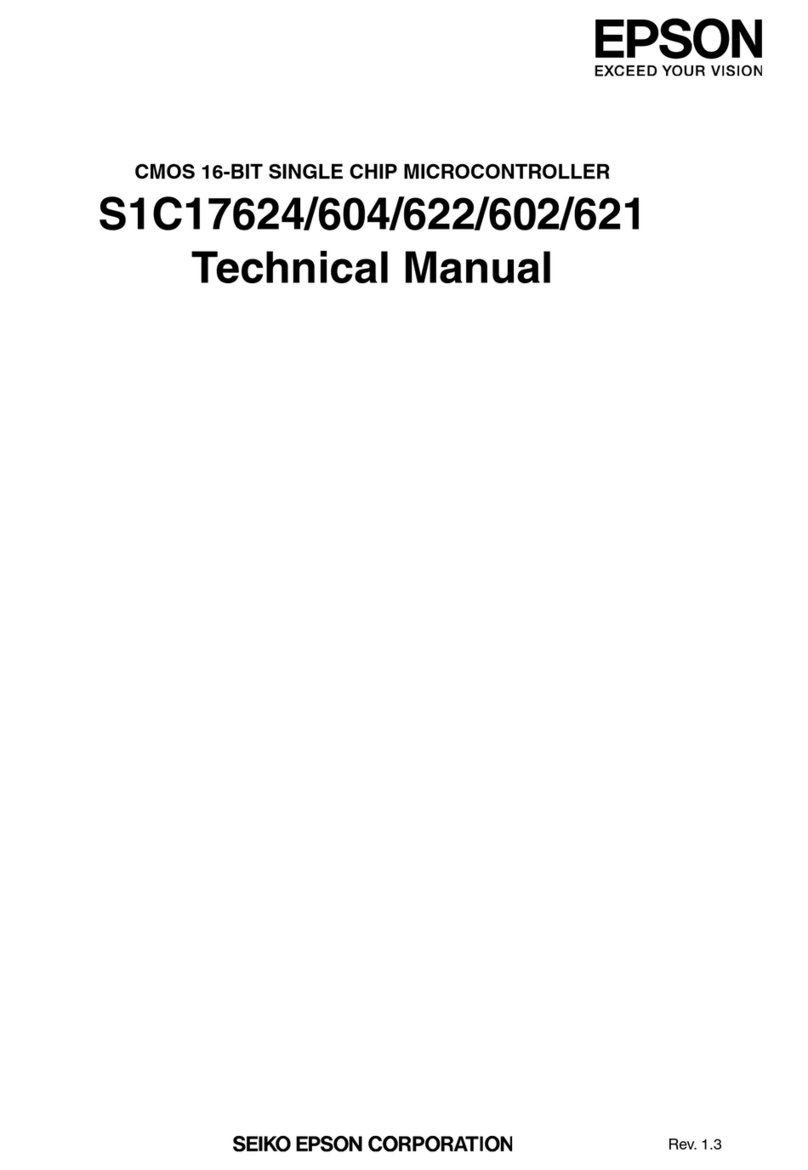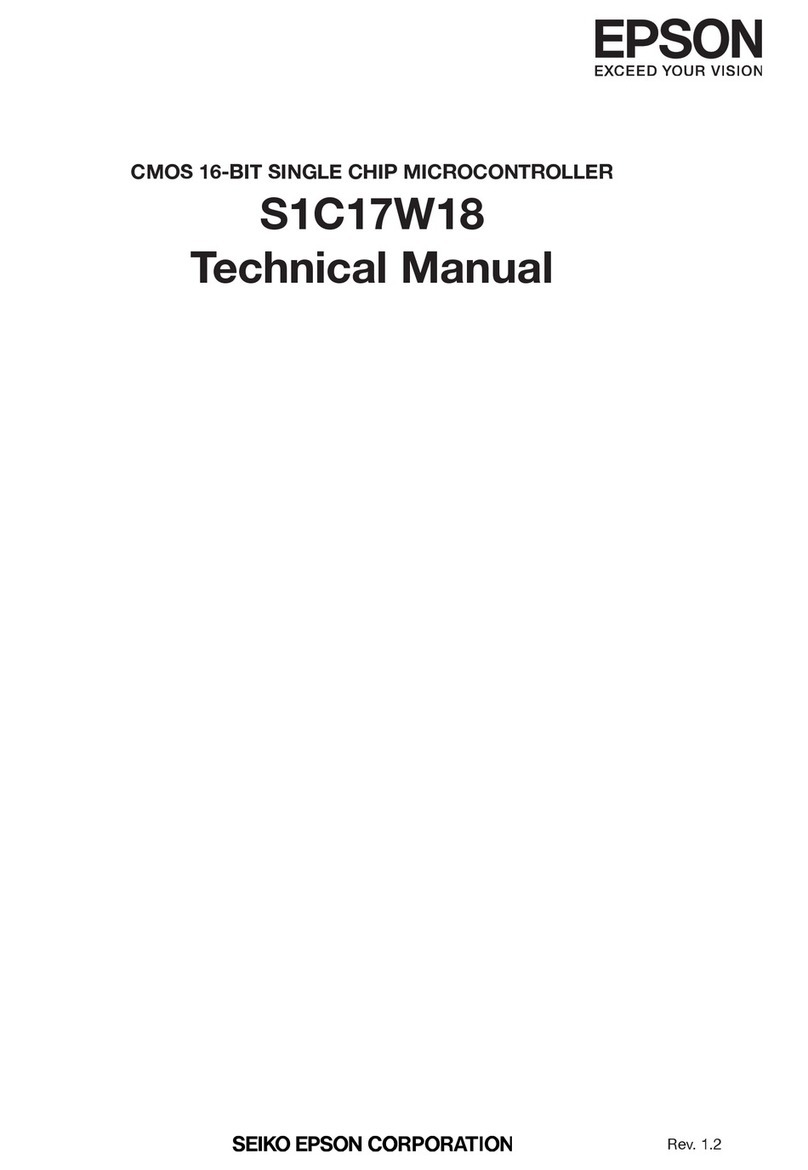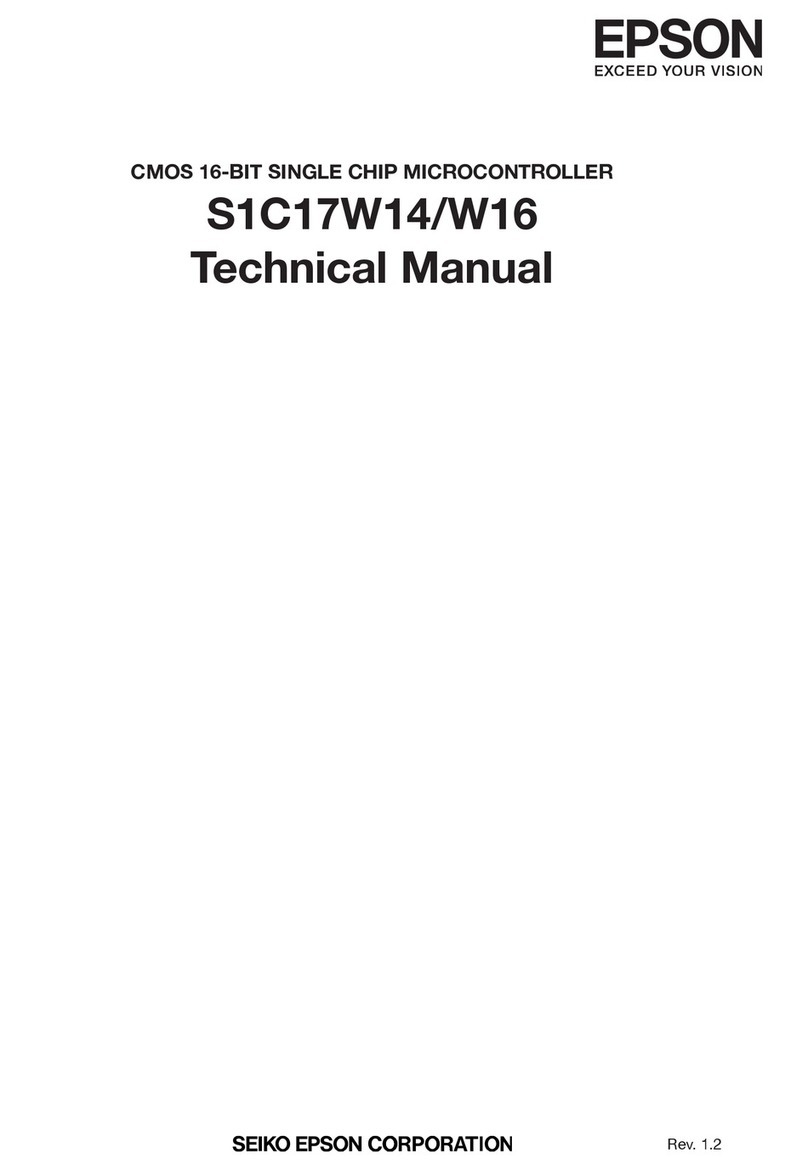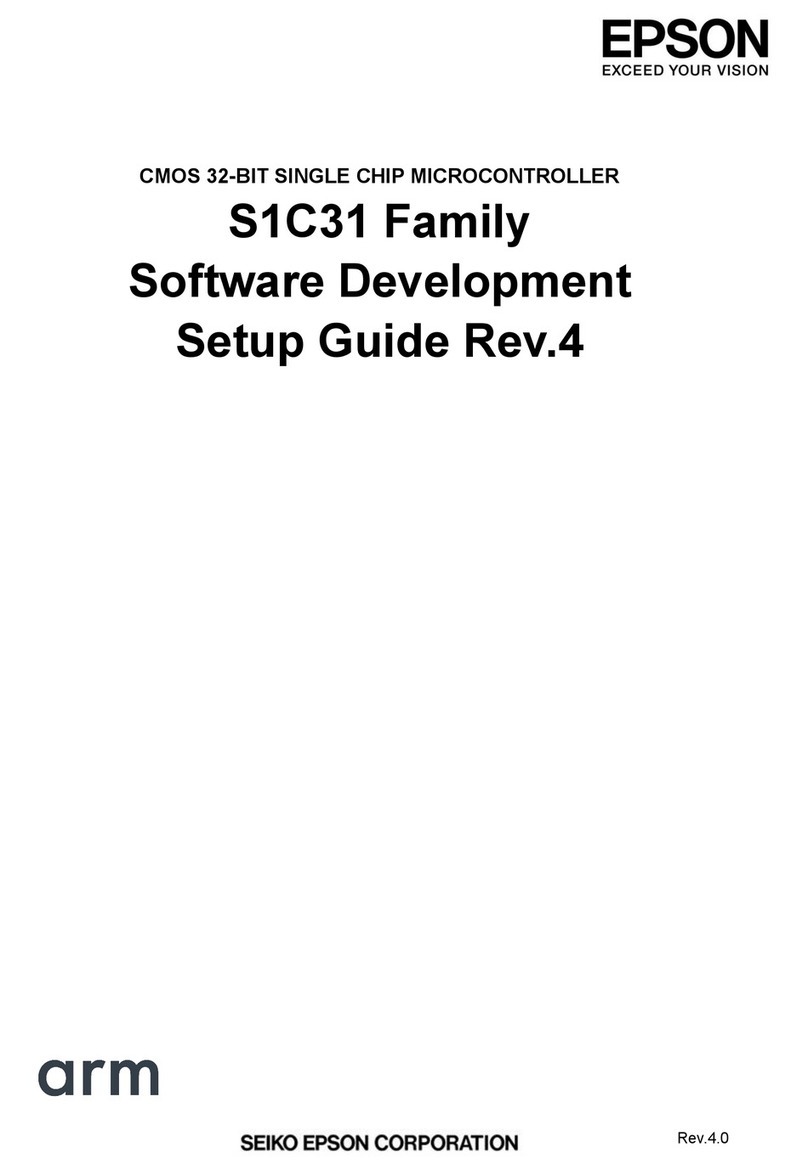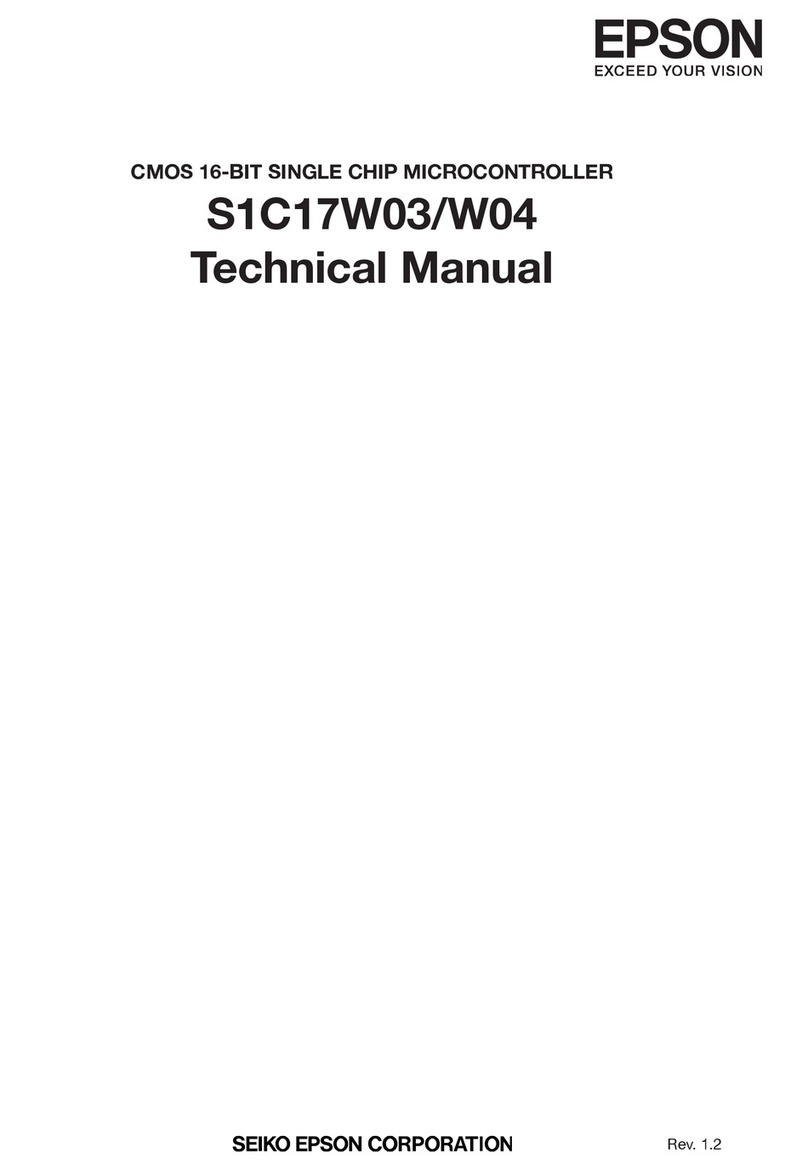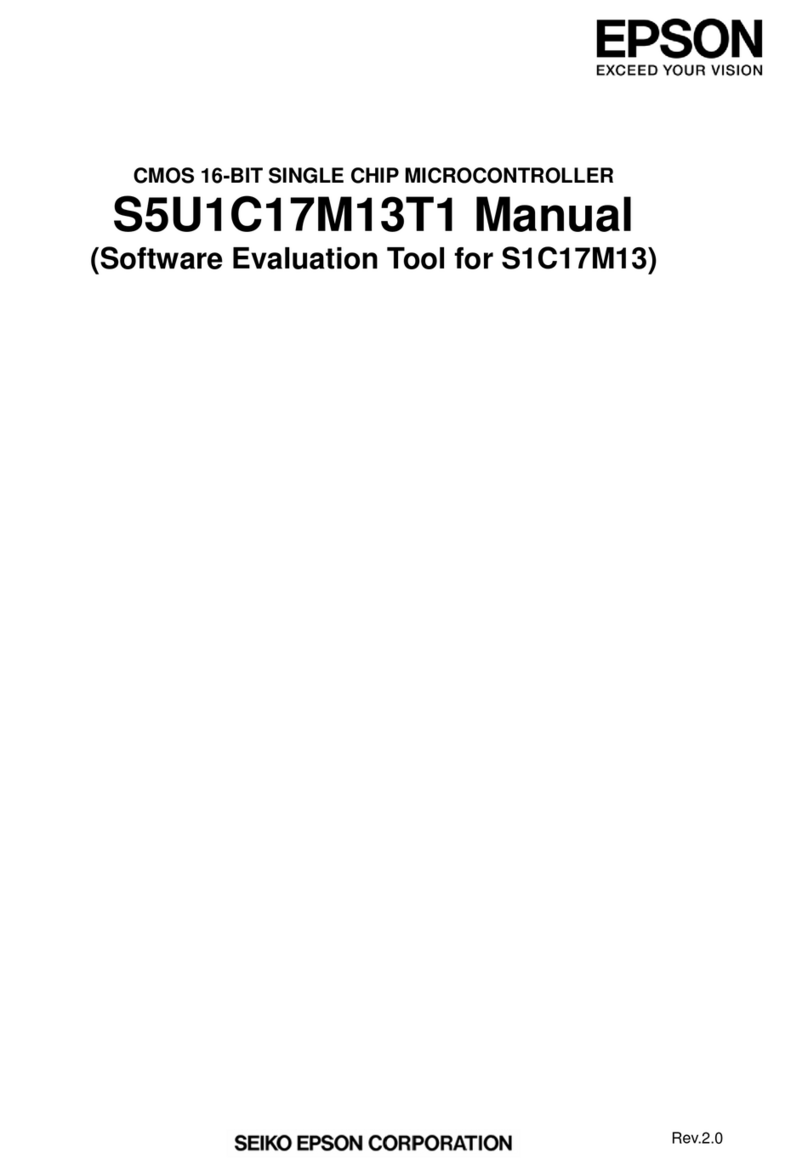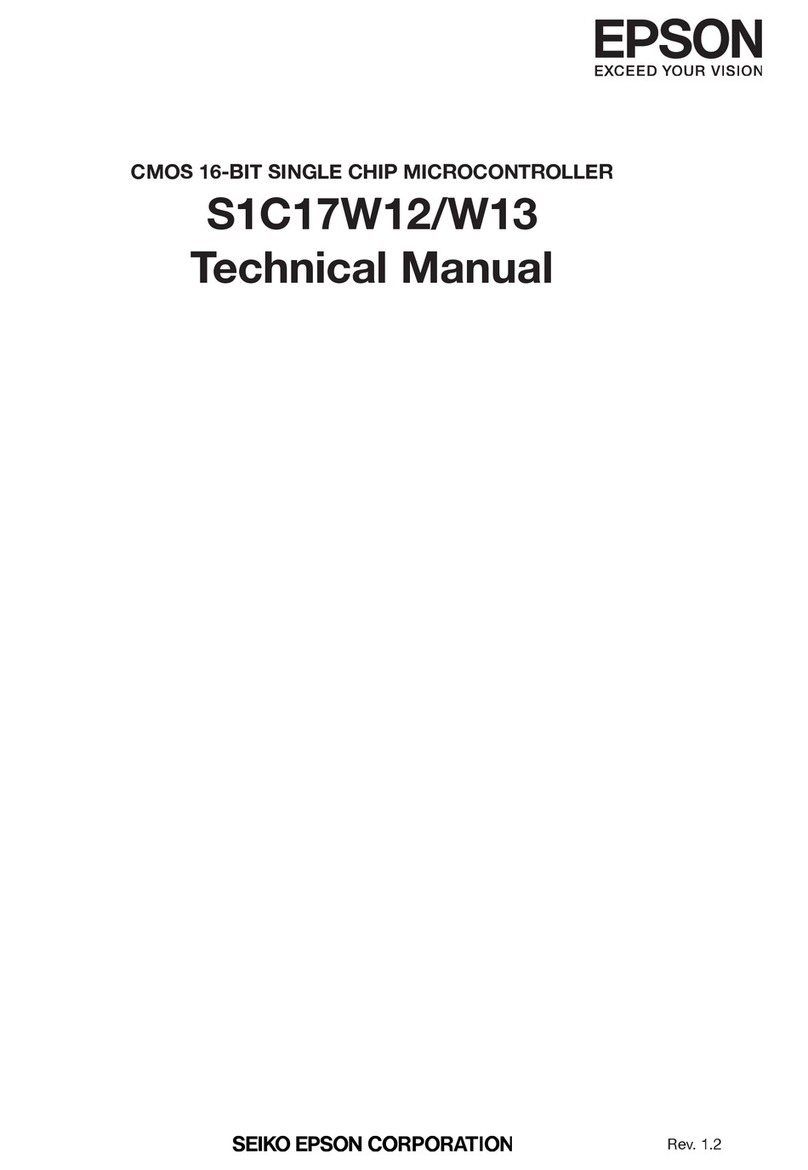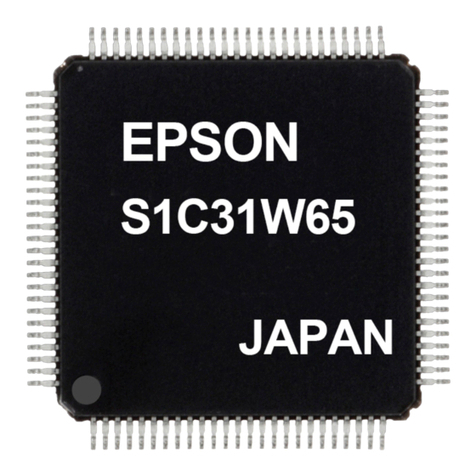
©
SEIKO EPSON CORPORATION 2021
, All rights reserved.
Evaluation board/kit and Development tool important notice
1. This evaluation board/kit or development tool is designed for use with engineering evaluation, demonstration, or develop-
ment purposes only. Do not use it for other purposes. It is not intended to meet the design requirements of finished products.
2. This evaluation board/kit or development tool is intended for use by an electronic engineer and is not a consumer product.
The user should use it properly and in a safe manner. Seiko Epson does not assume any responsibility or liability of any kind
of damage and/or fire caused by its use. The user should cease to use it when any abnormal issue occurs even during proper
and safe use.
3. Parts used for this evaluation board/kit or development tool may be changed without any notice.
NOTICE : PLEASE READ CAREFULLY BELOW BEFORE USING THIS DOCUMENT
The contents of this document are subject to change without notice.
1. This document may not be copied, reproduced, or used for any other purpose, in whole or in part, without the consent of the
Seiko Epson Corporation (“Epson”).
2. Before purchasing or using Epson products, please contact our sales representative for the latest information and always be
sure to check the latest information published on Epson’s official web sites and other sources.
3. Information provided in this document such as application circuits, programs, usage, etc., are for reference purposes only.
Using the application circuits, programs, usage, etc. in the design of your equipment or systems is your own responsibility.
Epson makes no guarantees against any infringements or damages to any third parties’ intellectual property rights or any
other rights resulting from the information. This document does not grant you any licenses, intellectual property rights or any
other rights with respect to Epson products owned by Epson or any third parties.
4. Epson is committed to constantly improving quality and reliability, but semiconductor products in general are subject to
malfunction and failure. By using Epson products, you shall be responsible for your hardware. Software and systems must
be designed well enough to prevent death or injury as well as any property damage even if any of the malfunctions or
failures might be caused by Epson products. When designing your products using Epson products, please be sure to check
and comply with the latest information regarding Epson products (this document, specifications, data sheets, manuals,
Epson’s web site, etc.). When using the information included above materials such as product data, charts, technical contents,
programs, algorithms and application circuit examples, you shall evaluate your products both on a stand-alone basis as well
as within your overall systems. You shall be solely responsible for deciding whether or not to adopt and use Epson products.
5. Epson has prepared this document and programs provided in this document carefully to be accurate and dependable, but
Epson does not guarantee that the information and the programs are always accurate and complete. Epson assumes no
responsibility for any damages which you incur due to misinformation in this document and the programs.
6. No dismantling, analysis, reverse engineering, modification, alteration, adaptation, reproduction, etc., of Epson products is
allowed.
7. Epson products have been designed, developed and manufactured to be used in general electronic applications (office
equipment, communications equipment, measuring instruments, home electronics, etc.) and applications individually listed
in this document (“General Purpose”). Epson products are NOT intended for any use beyond the General Purpose uses that
requires particular/higher quality or reliability in order to refrain from causing any malfunction or failure leading to death,
injury, serious property damage or severe impact on society, including, but not limited to those listed below. Therefore, you
are advised to use Epson products only for General Purpose uses. Should you desire to buy and use Epson products for a
particular purpose other than a General Purpose use, Epson makes no warranty and disclaims with respect to Epson products,
whether express or implied, including without limitation any implied warranty of merchantability or fitness for any particular
purpose. Please be sure to contact our sales representative and obtain approval in advance.
【Particular purpose】
Space equipment (artificial satellites, rockets, etc.)
Transportation vehicles and their control equipment (automobiles, aircraft, trains, ships, etc.)
Medical equipment (other than applications individually listed in this document) / Relay equipment to be placed on ocean floor
Power station control equipment / Disaster or crime prevention equipment / Traffic control equipment / Financial equipment
Other applications requiring similar levels of reliability as those listed above
8. Epson products listed in this document and our associated technologies shall not be used in any equipment or systems that
laws and regulations in Japan or any other countries prohibit to manufacture, use or sell. Furthermore, Epson products and
our associated technologies shall not be used for developing weapons of mass destruction, or any other military purposes or
applications. If exporting Epson products or our associated technologies, you shall comply with the Foreign Exchange and
Foreign Trade Control Act in Japan, Export Administration Regulations in the U.S.A. (EAR) and other export-related laws
and regulations in Japan and any other countries and follow the required procedures as provided by the relevant laws and
regulations.
9. Epson assumes no responsibility for any damages (whether direct or indirect) caused by or in relation with your non-
compliance with the terms and conditions in this document.
10. Epson assumes no responsibility for any damages (whether direct or indirect) incurred by any third party that you assign,
transfer, loan, etc., Epson products to.
11. For more details or other concerns about this document, please contact our sales representative.
12. Company names and product names listed in this document are trademarks or registered trademarks of their respective
companies.
(Rev. e1.0, 2021.9)
